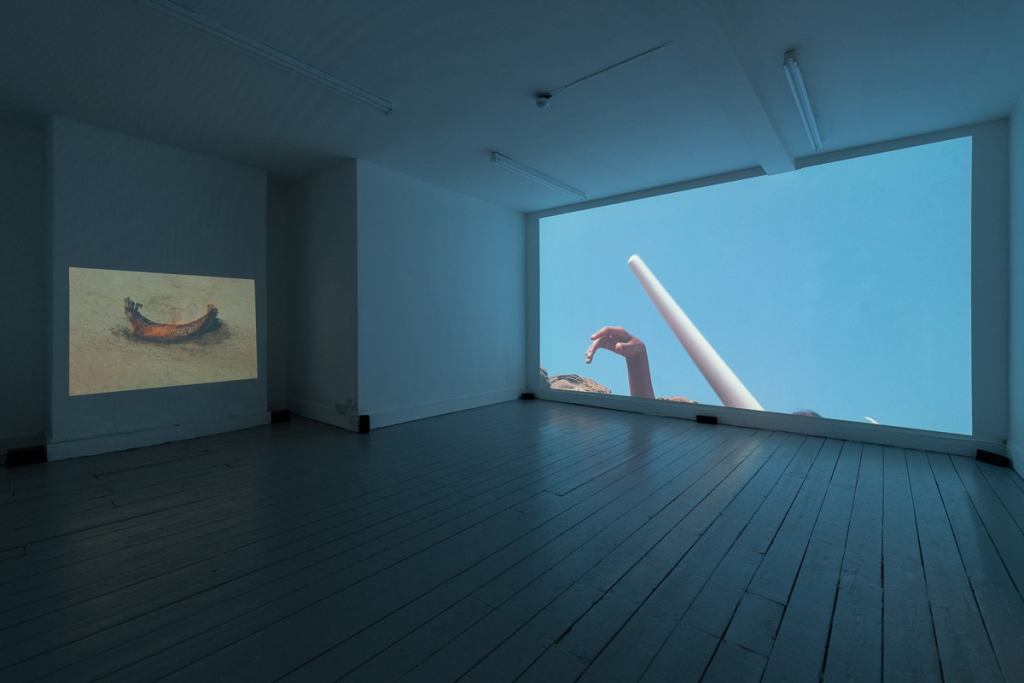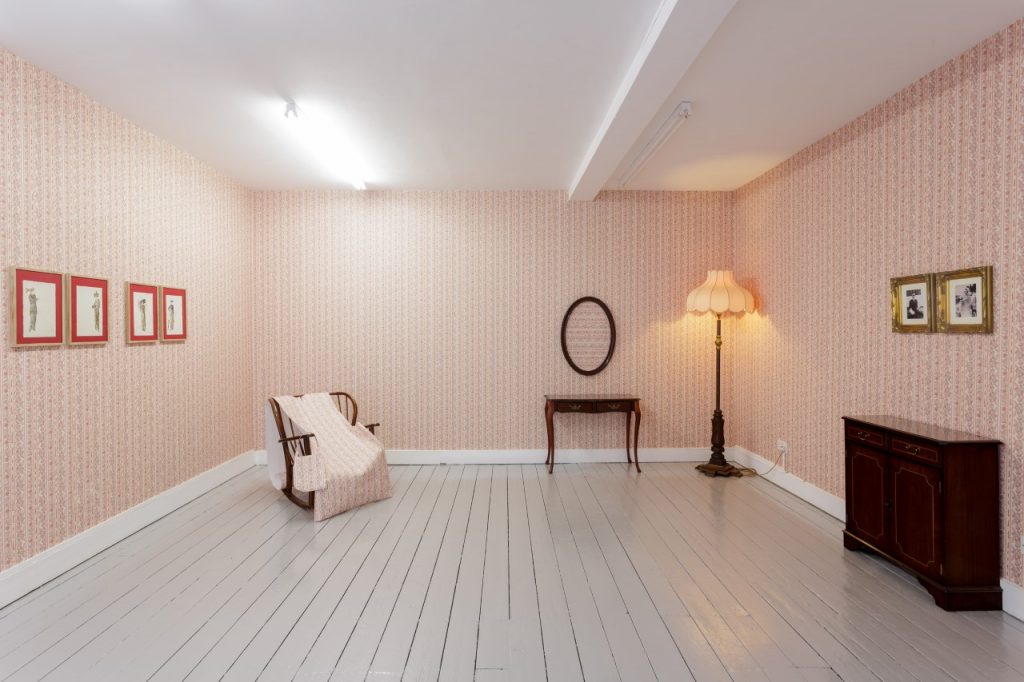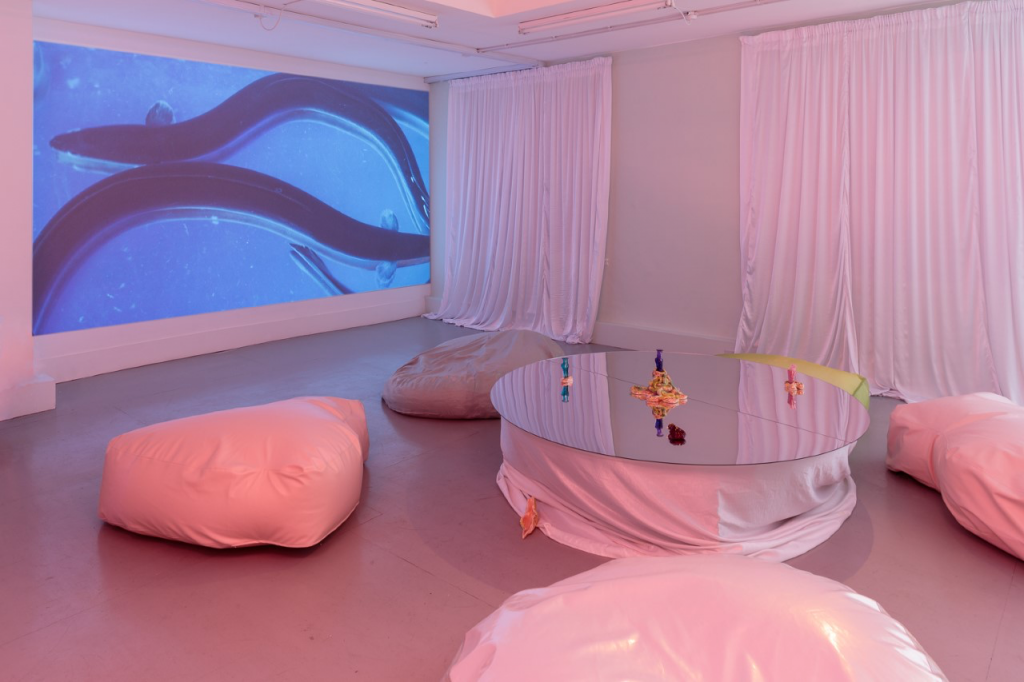FRONTRUNNER Meets Curator Daria Khan

Daria Khan is a founder and curator of Mimosa House, an independent non-profit project space in London. Khan is an independent curator, who graduated with an MA in Curating Contemporary Art at the Royal College of Art in 2013. Her exhibitions and projects have appeared at MAST Foundation (Bologna), the Austrian Cultural Forum in London, Photographers Gallery (London), and the 5th Moscow Biennial, among others. Co-curated exhibitions and projects include The Royal College of Art and Bloomberg New Contemporaries Film Salons at the ICA (London). Khan was also a curator-in-residency at MuseumsQuartier (Vienna) and the Palais de Tokyo (Paris). She has been a visiting speaker at Centre Georges Pompidou (Paris), the School of the Art Institute of Chicago, and at Christ Church College, Oxford University. Khan talks to FRONTRUNNER about the origins of Mimosa House and her curatorial approach.

As It Is
Installation view, Mimosa House (London), 2018
Photo credit: Damian Griffiths
To begin with a general question, one that I am sure you have been asked before: how did Mimosa House begin and what were the intentions behind it?
Mimosa House has started from a residency I did with friends and collaborators on a volcanic island and spontaneously, after the residency, we decided to make the show Growing Gills. I got to use the space initially for few months, also through friends, so I thought of doing a few pop-up shows. Then it all took off and one project followed another. I registered MH as a CIC (Community interest Company), we made a website, started to get funding, and it started to form into a project space with its own identity. The usage of the space also got extended longer than I expected [it to], which allowed me time to find another permanent space to move to in Holborn in the summer of 2020. Since the beginning, I wanted to concentrate on working with women and queer artists, which was my interest since I was at the Royal College of Art and in my earlier independent curatorial projects. Also, my experience working for a big commercial gallery at the beginning of my career had an effect on thinking about other ways of working.
You work with women and queer artists, as well as maintaining a strong programme encouraging engagement with particular subjects, discussions, and ideas. What is your curatorial approach and how has your work at a commercial gallery had an effect on your way of working?
I never felt safe and relaxed working for a big commercial gallery. It often felt uncomfortable with people objectifying or exoticising me, as I often had to work at art fairs and at the gallery’s reception. We’re talking about 10 years ago though, hopefully there have been changes for the better, today. Also, I missed sincere and live engagement with artists, ideas, and educational values. In my current work with Mimosa House, I choose to prioritise [a] safe and inclusive space for people who need it rather than try to address or educate people who don’t share our values. I also believe in a healthy and comfortable working environment, with like-minded people and collaborators. I think, eventually, this can be perceived in the care we apply to our programming.
Mimosa House works within different parameters versus commercial galleries which may be a reason why, as you have mentioned, you can prioritise your own agendas in relation to your programme. You mentioned the word care, could you talk more about how you apply this to your practice and MH? Do you expect care back from those you offer it too?
By care I mean the awareness of labour, both material and affective, that everyone involved puts into the project. Artists and curators are often exploited and work for free or for reduced wages based on the fact that their jobs are considered fun and rewarding. This leads to the blurred frontiers between work and free time, becoming a lifestyle and for some it is also intertwined with activist work. Another question is how to have work flexibility for people with caring responsibilities and mental vulnerabilities. As our team grows, it’s important for me to prioritise these aspects. It was difficult for me to get back to work after I had my child, as I felt I had to hide the fact [that] I was a parent to be considered able to work. Often even big institutions and residencies don’t have conditions for people who are parents. Yes, I do expect care back from people, I think it’s a human exchange.

A Silenced Victory
Installation view, Mimosa House (London), 2019
Photo credit: Tim Bowditch
What type of conditions would you like to see put in place?
I believe paid parental leave should be of equal length regardless of people’s gender as this would decrease unequal conditions at work. I believe a code of conduct at work, which includes information about affective labour, care, ethics, burn-out, etc., would be really helpful. It would make people feel safer and know their rights and know when to ask help. Also, I’m a believer in quotas for diverse people, as a means of diversifying teams at art institutions.

Sunday Fantasy
Installation view, Mimosa House (London), 2019
Photo credit: Tim Bowditch










